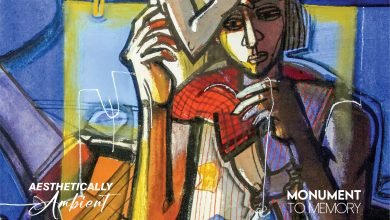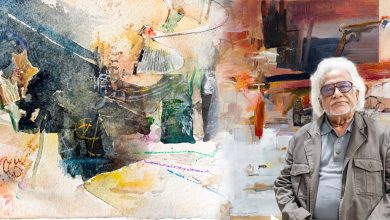Reflecting on Roots – Kanak Chanpa Chakma
Kanak Chanpa Chakma is a well known face among popular contemporary artists of our time. Her art is transcendental, portraying the timeless beauty of our country and its people, especially women. A prolific artist, her work speaks of the oft-forgotten indigenous people and their mesmerising lifestyle. We spoke to this true icon of our time, bringing you snippets of her illustrious life.
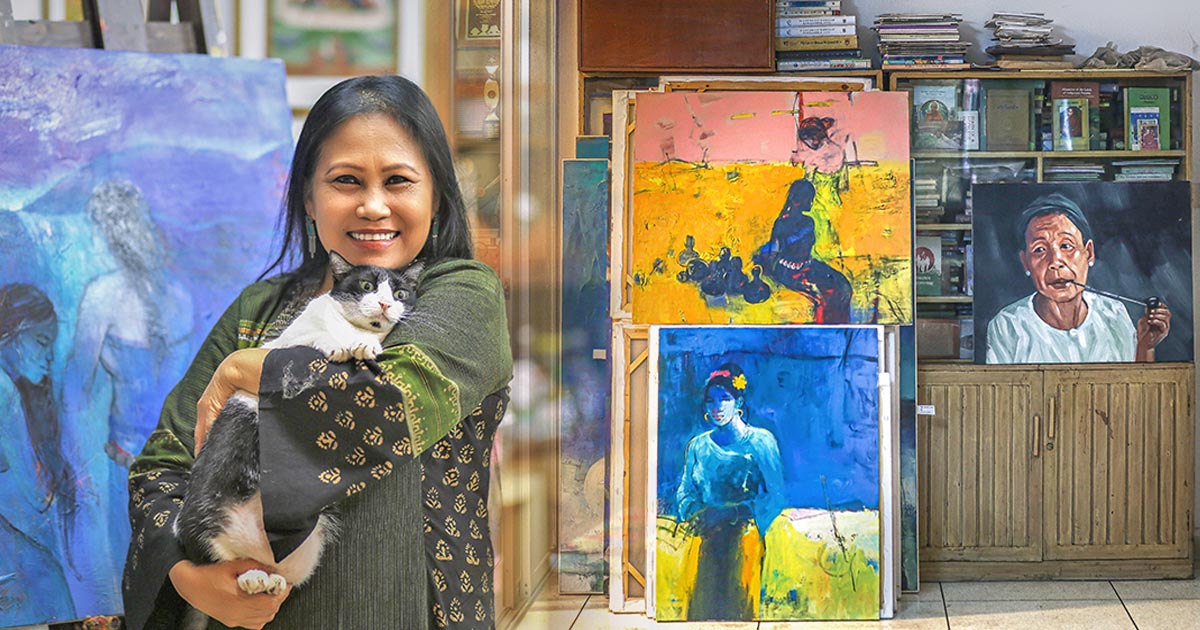
Kanak Chanpa confesses that childhood was perhaps the best time of her life and it continues to inspire her still. Her childhood home was in Rangamati city. Her eyes are full of dreamy nostalgia, as she describes a paradise of sprawling hills and forest surrounding a cottage, and the view of Karanaphuli Lake right next to the premises.
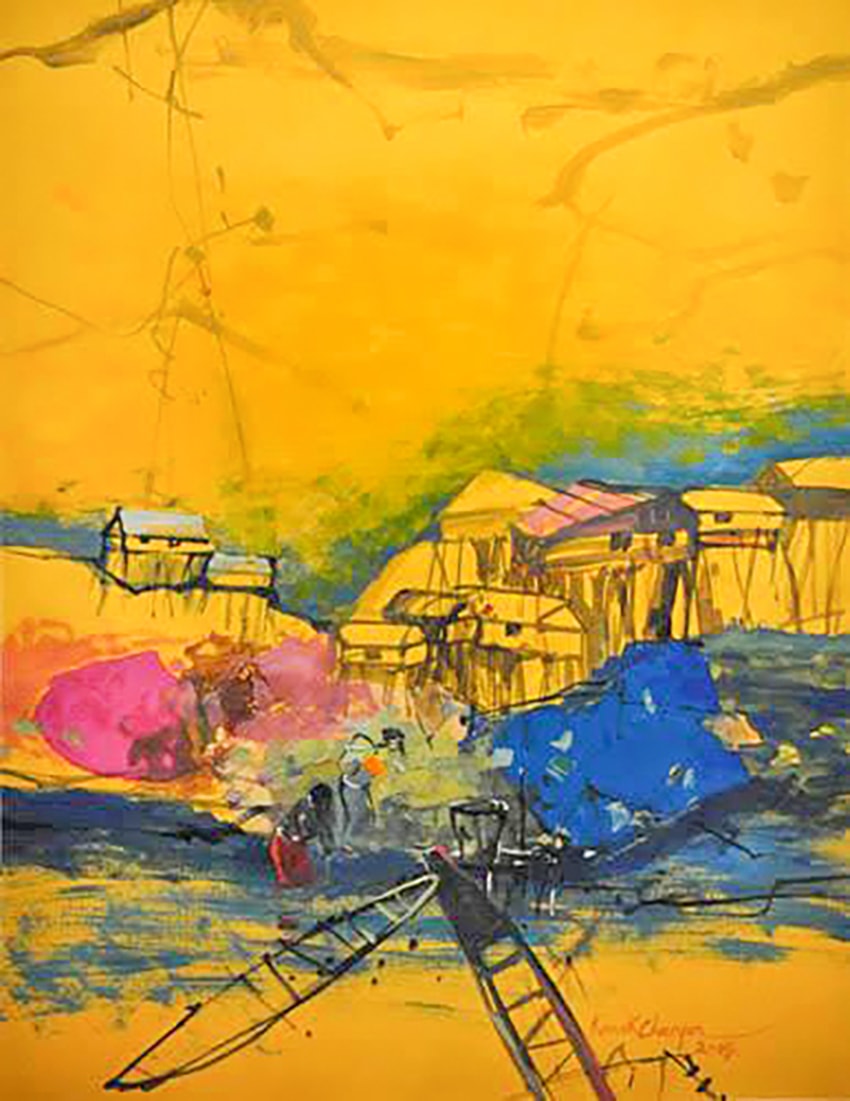
Her family had a lot of pets and she grew up with a strong bonding with nature that aided in her artistic journey.
Kanak Chanpa’s mother herself had been a prodigious designer, completing the fabric design catalogue of the chakma people at the mere age of 7. She continued her work, preferring bright coloured threads.
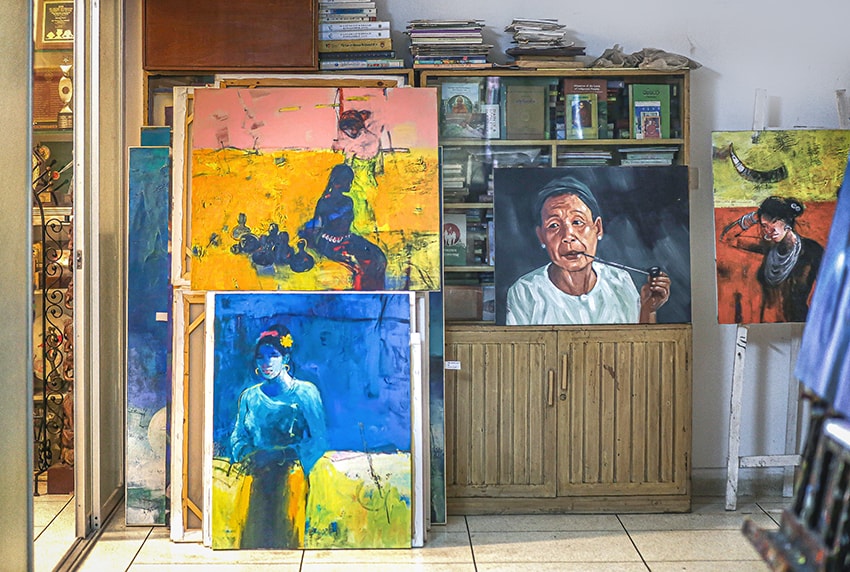
These colours left a lasting impression on Kanak Chanpa and she always loves to paint with vibrant primary colours.
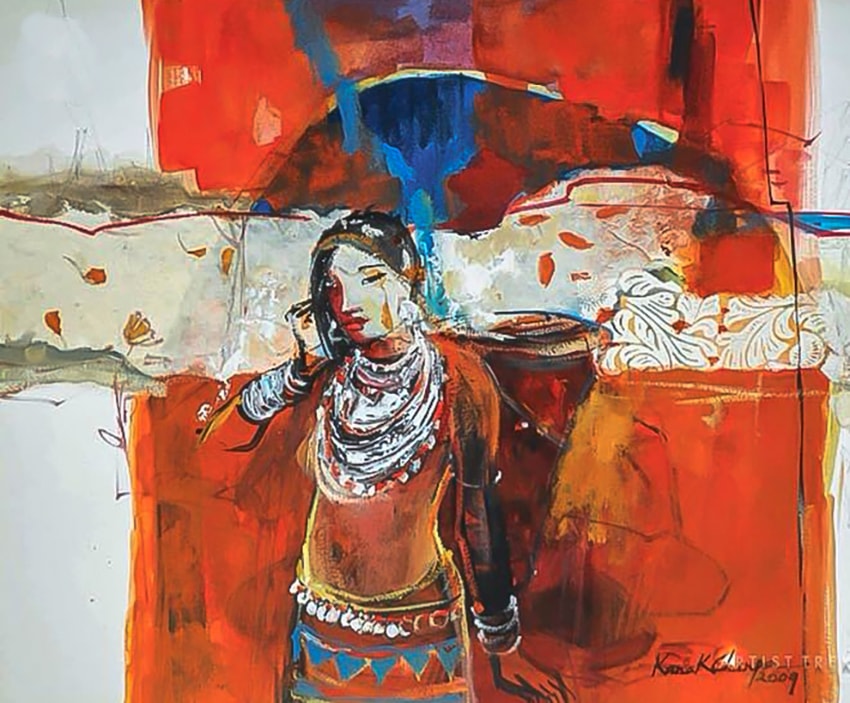
Kanak Chanpa’s journey started early. She used to participate in art competitions and won a number of awards in her childhood, in both Chittagong and Dhaka. When the time came to choose a place for higher education, she decided to come to Dhaka and get admitted in the Charukola.
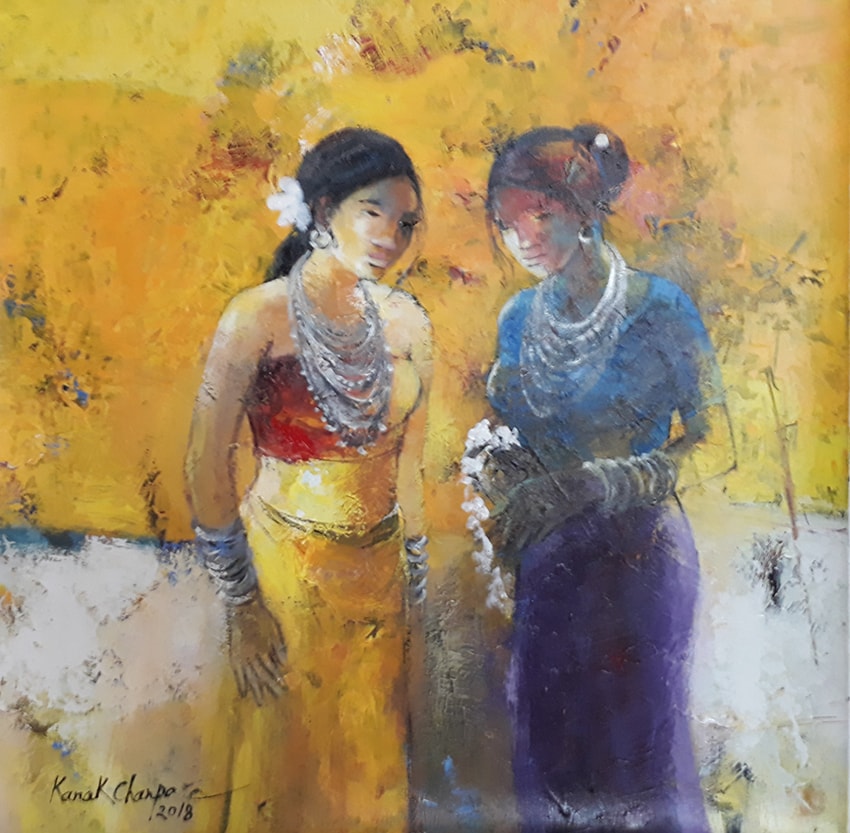
This decision proved to be beneficial, as it gave her the chance to work with contemporary artists from the mainland. Her life in a small hostel was full of learning and practices. “I often went with teachers and seniors to practice outdoors, not caring about sun or rain.
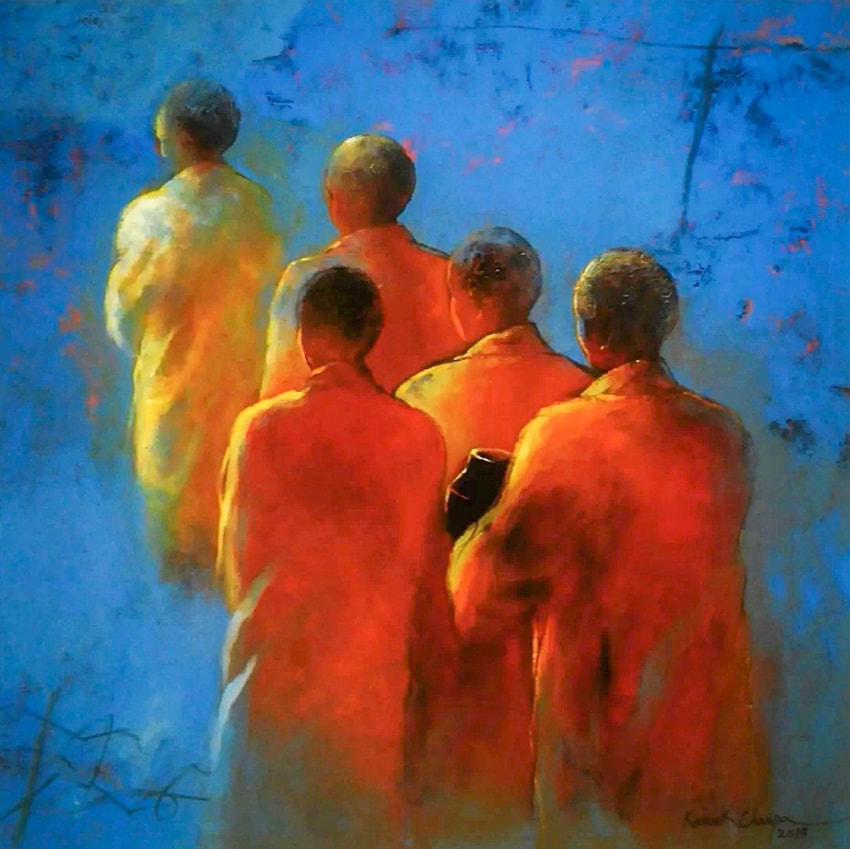
From late night train stations, to fish markets and even ship yards, my practice continued”, she explains. These years of hard work and struggle helped her find her own unique style.
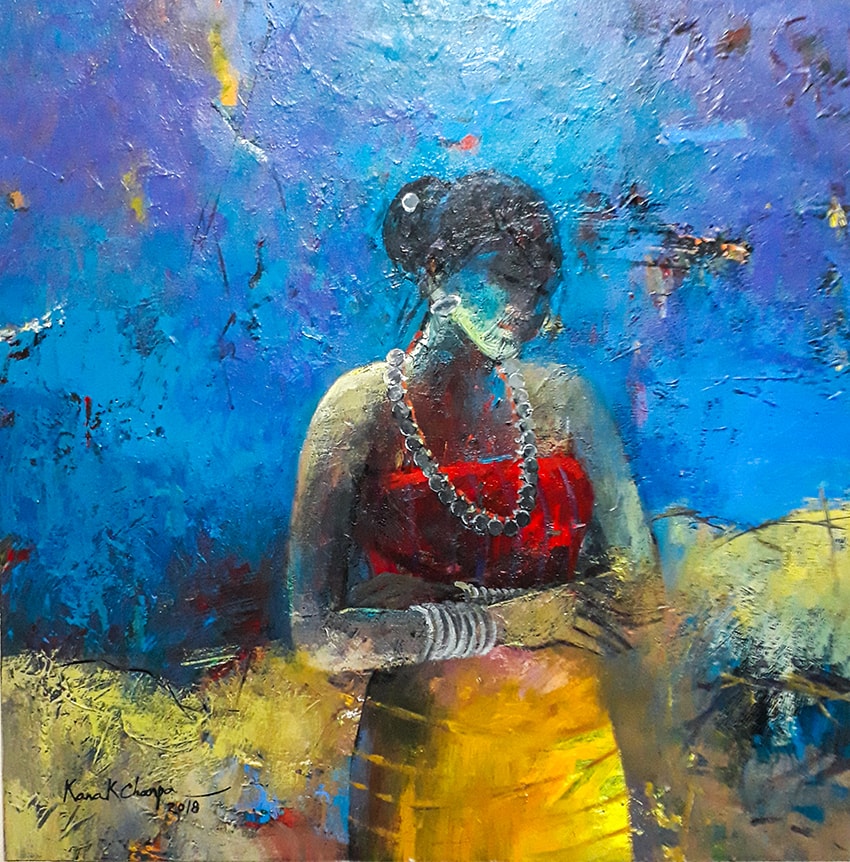
Kanak Chanpa emphasizes on her people’s culture and lifestyle as the predominant subject of her artworks. In her long years of work, she has worked with all 21 indigenous groups of Bangladesh. As this is a rare new element in Bangladesh art scene, she strives to portray it perfectly with her deep knowledge and insight.
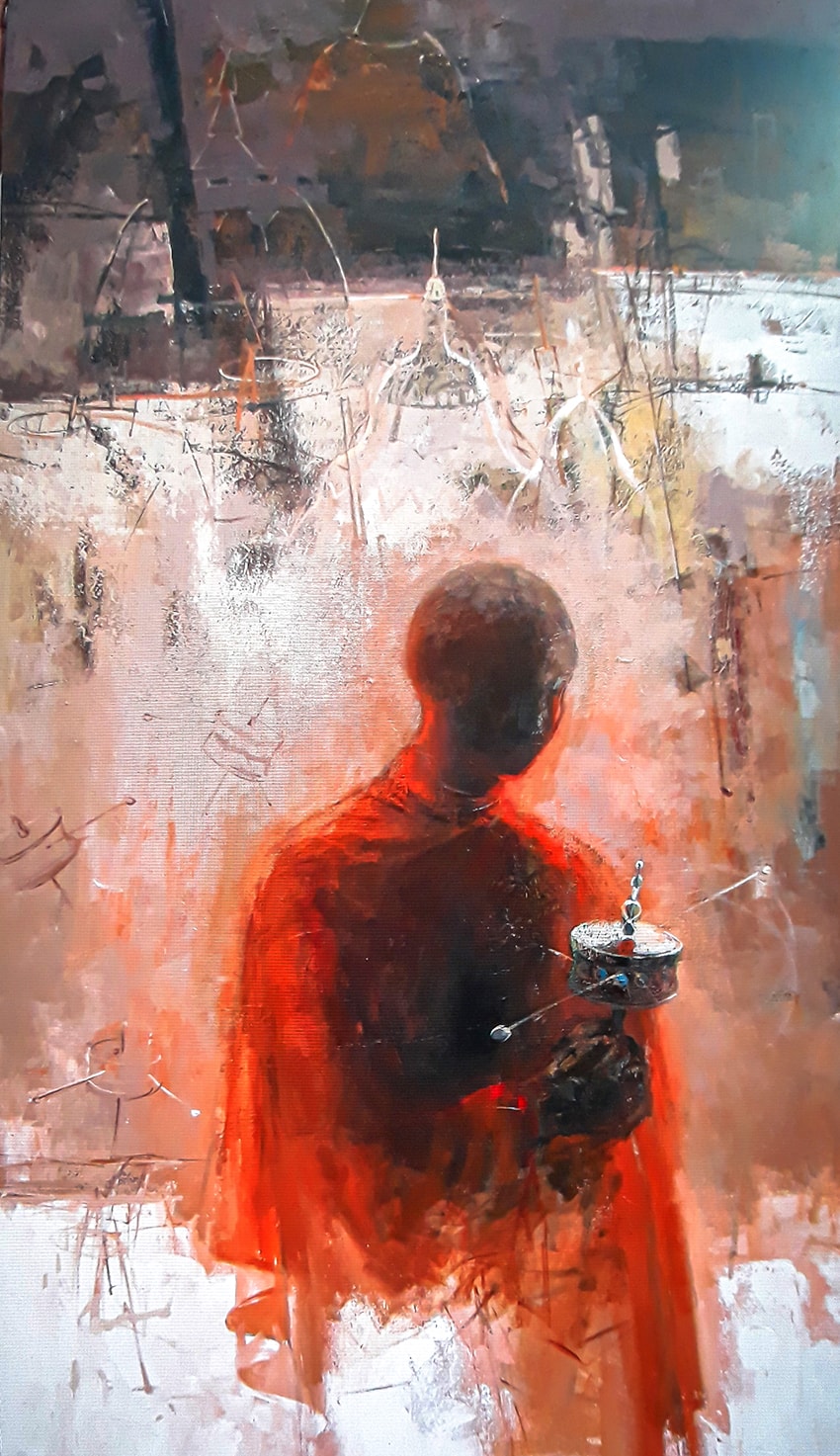
Her work does not only include indigenous people of Bangladesh, but of other countries as well. In 1994, she received the American Alliance Fellowship for a year. She spent the year with the Native Americans of Albuquerque. Astonishingly, their origins also belonged somewhere in Asia, and Kanak Chanpa observed stunning similarities between indigenous people of these two countries. She did an exhibition there with her paintings on these people. After coming back, she did another exhibition that portrayed both American and Bangladeshi indigenous people.
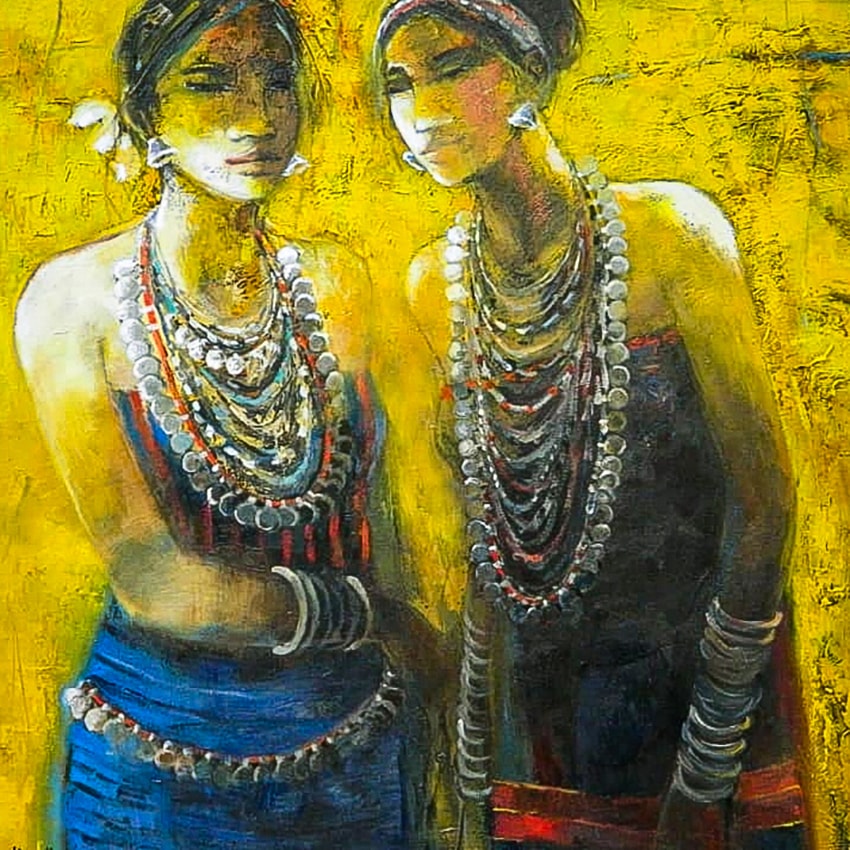
A few years later, Kanak Chanpa received a Chinese Fellowship, and travelled to Kunming, in Yanan Province. The indigenous people living there are of the Dalu tribe. They greeted her as if she were one of their own. After coming back, she did another exhibition on them, in 2010.
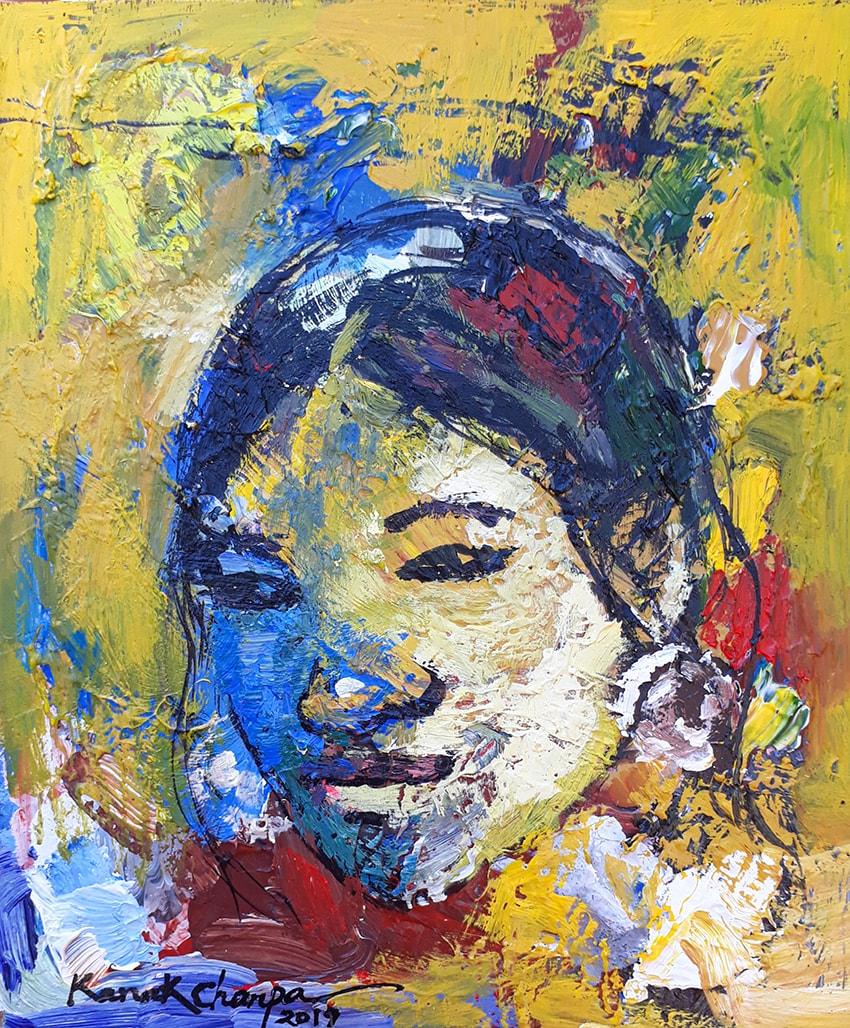
As Kanak Chanpa developed her personal style through practice, she found great inspiration from the legendary artist Paul Gauguin. Eugène Henri Paul Gauguin was a French post-Impressionist artist. His experimental use of colour and Synthetist style were distinctly different from Impressionism. His works featuring the lifestyle and people of Tahiti influenced Kanak Chanpa. When she saw his works firsthand at the Louvre, her artistic journey found the path it was meant for. She explains that her work follows neither the norms of modern ‘isms’ but rather is a style of semi-realism, semi-abstraction. It is contemporary yet ethnic, traditional yet modern.
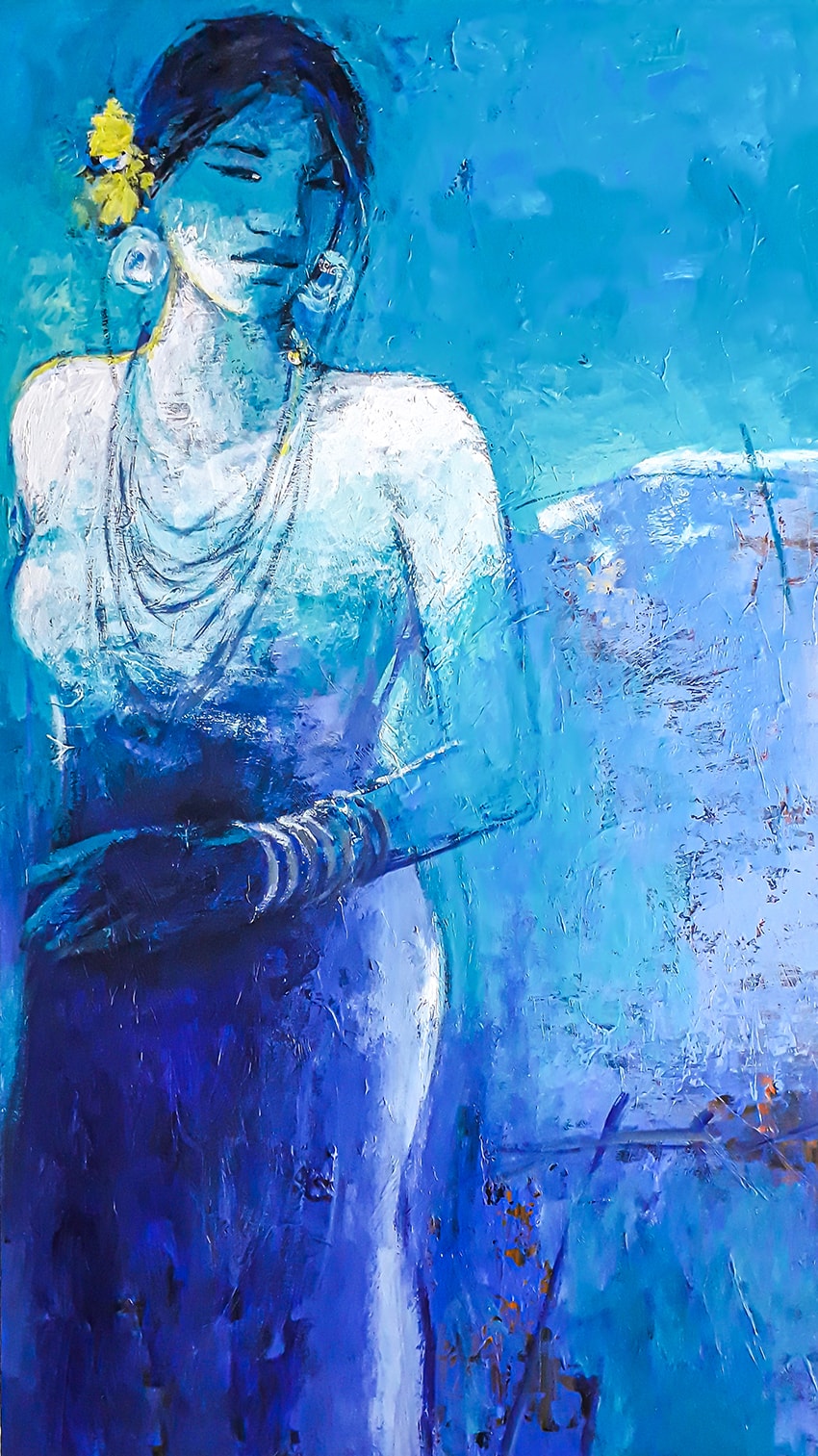
Kanak Chanpa Chakma loves to bring out the minute details in the life of indigenous people. “Art is an International language that boundaries cannot stop.”
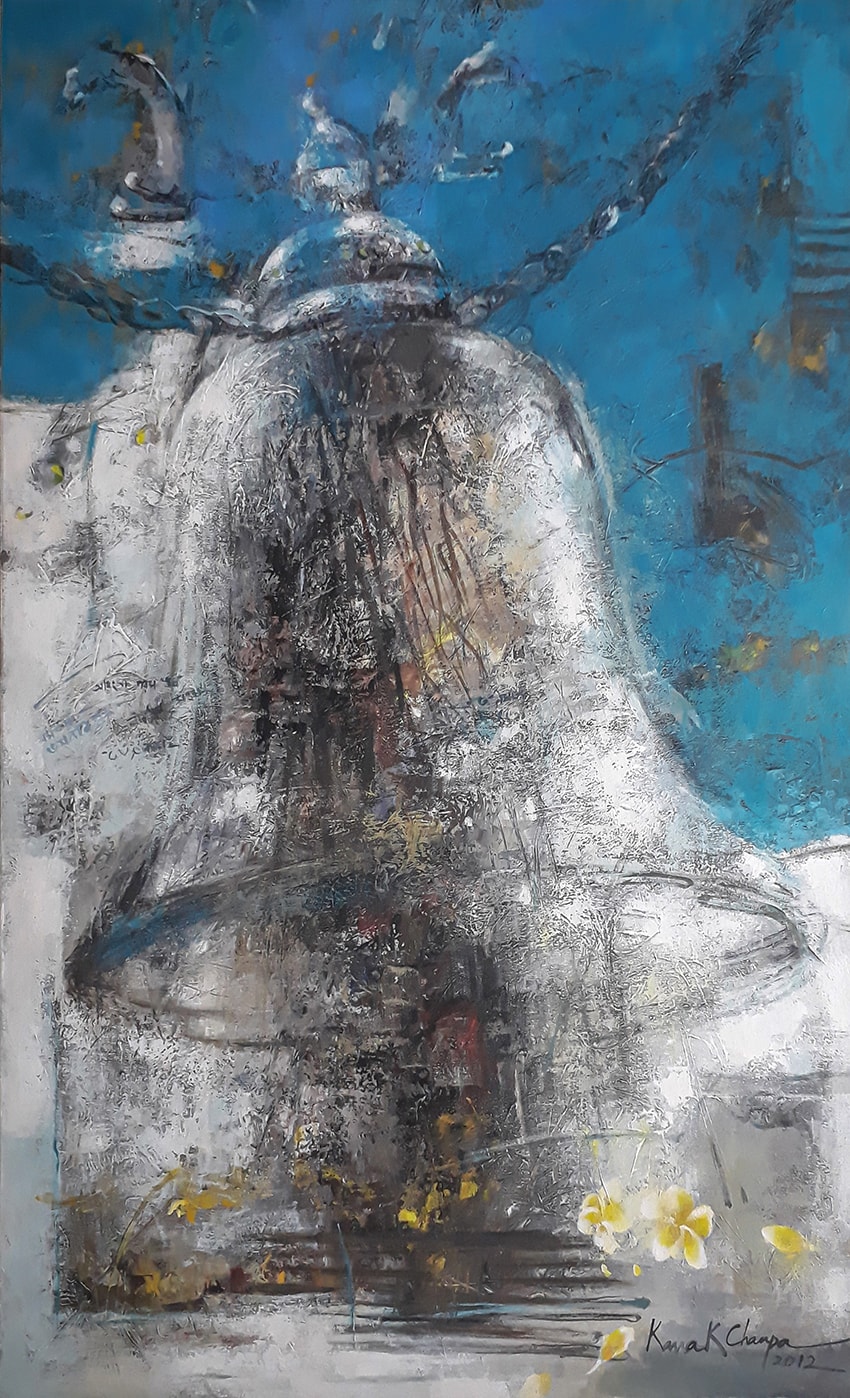
She loves to bring out the minute details in the life of indigenous people. Boisterous occasions that include dressing up and wearing flowers, attending the pagodas during Purnima are her favourite subjects.
The more authentic the lifestyle, the more it attracts her. She explained her favourite memory of working with the Murong tribe. They live in an isolated area at the foot of Chimbuk hill. Their lifestyle is near primitive and full of the ancient rhythm of nature that modern life is devoid of. She painted almost 70 pieces on the Murong people and exhibited them in 2012.
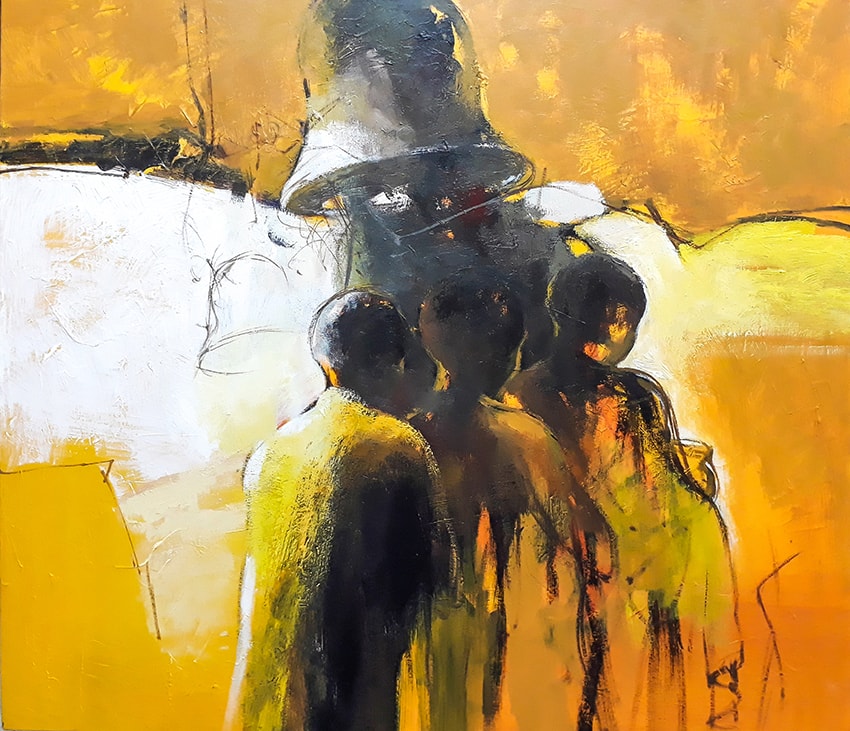
She continues to work tirelessly on the near forgotten life and culture of indigenous people all over the country. Her upcoming exhibition set to start in October is going to showcase works from 5 indigenous tribes including the Santals.
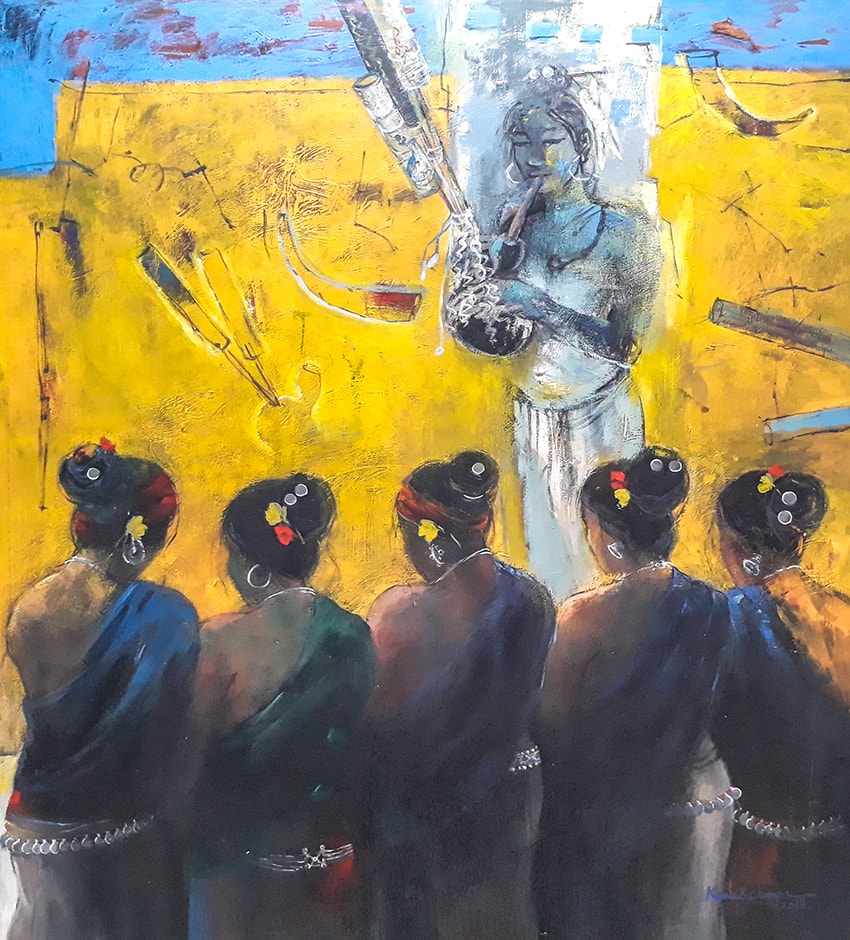
Remarking on the present art scene in Bangladesh, Kanak Chanpa expressed her opinion that the situation makes it easier for newcomers to get exposure and recognition needed to start a career. The Art Biennales and exhibitions expose them to the international art scene and provide a learning experience that was unthinkable before. “As art in an international language, our youth are learning it and in turn, their art gives a new face to Bangladesh in front of the whole world”, she says.
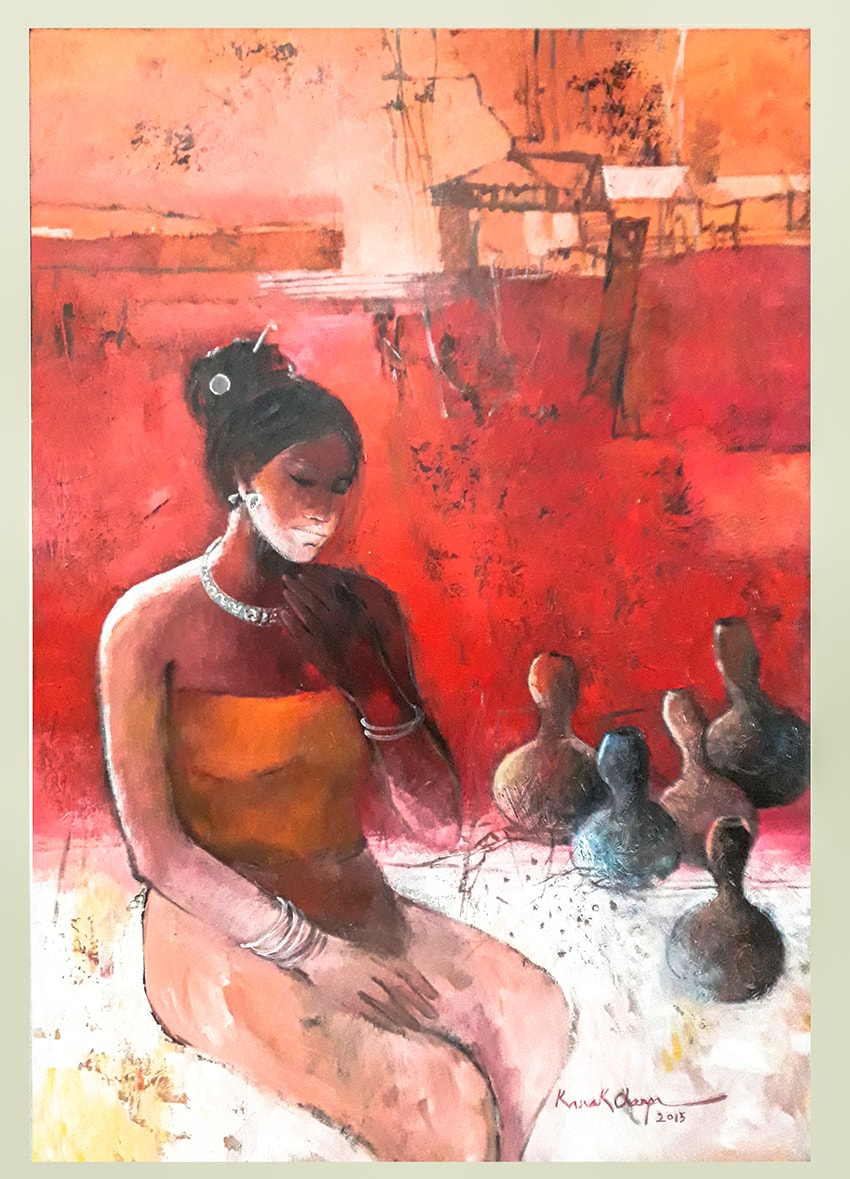
Kanak Chanpa’s advice to the young artists is simple; do not rush to do a solo exhibition. Back when they were budding artists, doing group exhibitions always took priority. It helped to mature an artist and refine their work. Nowadays artists jump into solo exhibitions and do not think to practice, which hampers their growth.
The one motto that Kanak Chanpa swears by is to never procrastinate and never leave your work for tomorrow, because you have a long way to go.


